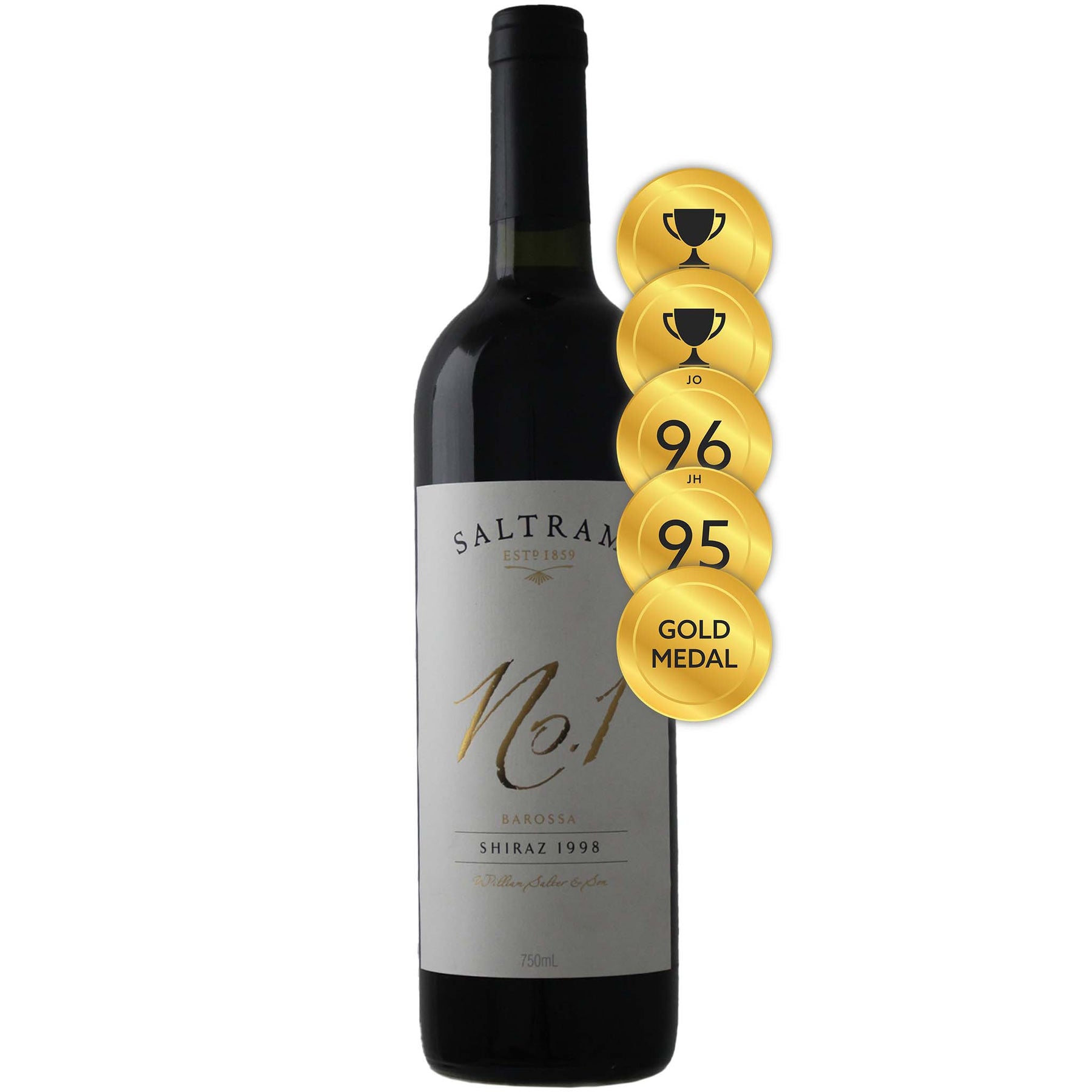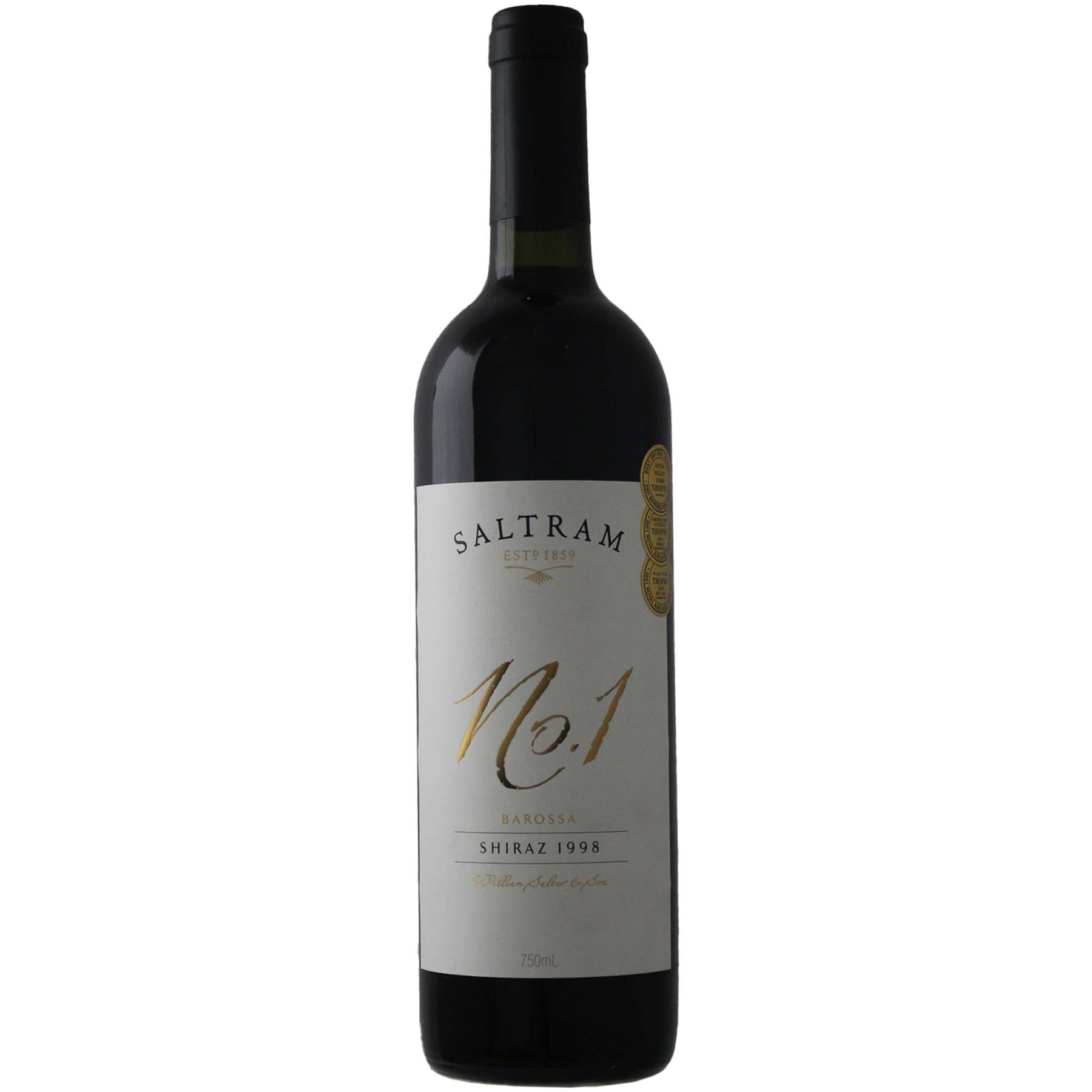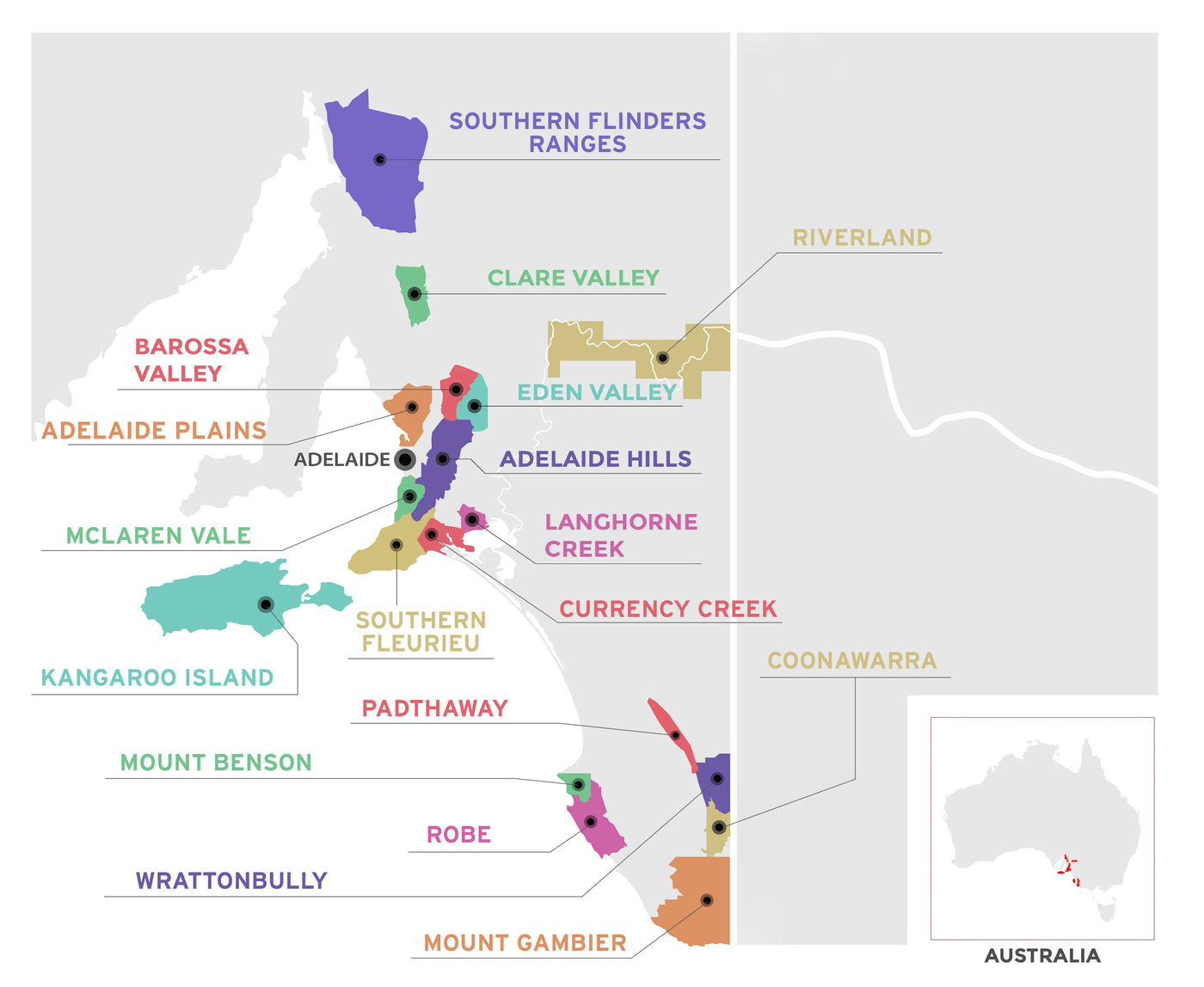

Saltram No 1 Barossa Shiraz 1998
Style: Red Wine
Variety: Shiraz
Closure: Screwcap
Saltram No 1 Barossa Shiraz 1998
Warehouse
34 Redland Drive
Vermont VIC 3133
Australia
Critic Score: 96
Alcohol: 14.5%
Size: 750 ml
Drink by: Now
Trophy winner - Barossa Wine Show 2001
Saltram No 1 Shiraz was first released in 1992 as a super-premium, rich red wine in the classic Barossa mould. The wine is named after the first wine made in 1862 by Saltram's father and son founders, William and Edward Salter, that was simply called 'No 1. Shiraz'. Over the years, successive vintages of No 1 have won numerous awards at major wine shows across Australia. The secret to the wine's success lies in the extraordinary heritage of low-yielding old vines primarily along the eastern fringes of the Barossa Valley floor.
"A clean, rich, round and full bouquet is followed by a luscious and rich palate, full of black cherry and chocolate fruit, oak and tannins. At the big end of town, and will richly repay extended cellaring. Trophy winner 2001 Barossa Wine Show and gold medal 2001 Great Australian Shiraz Challenge." James Halliday
Expert reviews
"A modern classic, looking better every time I taste it. Deeply perfumed, smoky floral aromas of violets, cassis and chocolate/mocha/vanilla oak are fresh and penetrative. Plush and concentrated with pristine, vibrant dark berry and plum fruit, it's superbly structured and balanced around firm, fine tannins and excellent new oak. Stylish and complete; neither over-ripe nor blocky. Drink: 2010-2018." Jeremy Oliver - 96 points
"Excellent red-purple colour; a clean, rich, round and full bouquet is followed by a luscious and rich palate, full of black cherry and chocolate fruit, oak and tannins. At the big end of town, and will richly repay extended cellaring. Trophy winner 2001 Barossa Wine Show and gold medal 2001 Great Australian Shiraz Challenge. Drink: Now - 2018." James Halliday, Halliday Wine Companion - 95 points
Awards
Trophy winner - Barossa Wine Show 2001
Gold medal - Great Australian Shiraz Challenge 2001
About the winery

William Salter arrived in South Australia from England in 1839 and five years later purchased land near Angaston in the newly opened land survey known as the Barossa Valley. A deeply religious man, he named the property "Mamre Brook" after an Old Testament camping spot west of the Dead Sea. In 1859, he founded Saltram with his son Edward under the name of W. Salter & Son. They planted the first vines in the Barossa - 10 acres of Shiraz at the eastern end of the property. A shed was erected for making wine and a cellar was carved out of a nearby hill. Their first vintage in 1862 produced 1800 gallons (8000 litres) of a wine they called 'No. 1 Shiraz'.
William Salter passed away in 1871, leaving Edward to run the property. In 1873, by which time the vineyard had grown to 25 acres, Edward employed Alfred Percy Birks (who subsequently set up AP Birks' Wendouree winery in the Clare Valley) to introduce Saltram wines to New Zealand. In 1882, Thomas Hardy & Sons agreed to purchase and market all of Saltram's production, which led to the establishment of Saltram in the English trade. By 1891, the size of the vintage had grown to 182,000 litres, 3/4 of which was high quality dry red, mainly shiraz, for export markets.
Edward's sons, Charles and Leslie, joined the business in 1898. Charles was appointed manager until he left in 1902 to start his own business and Leslie succeeded his brother. Leslie became close friends with Ronald Martin of Stoneyfell and, in 1920, Saltram was converted to a company and Stoneyfell took a one-third interest. Following Leslie Salter's retirement in 1937, Saltram was managed by Stoneyfell and in 1941 it became a wholly owned subsidiary of Stoneyfell. The two companies worked in tandem, winemaking was carried out at Saltram and maturation and bottling at Stoneyfell.
The legendary Peter Lehmann was appointed Winemaker/Manager in 1959, a position he held for 20 years. Lehmann introduced the Mamre Brook label in 1963, which became one of the most sought-after red wines in South Australia. The Dalgety Pastoral Company took ownership of Saltram in 1972, but disposed of the winery shortly before the 1979 vintage, leaving wine maker Peter Lehmann without a job and many grape contractors without a buyer for the year’s crop. Lehmann parted company with Saltram to start Peter Lehmann Wines and rescued the growers in time for the vintage.
From 1979 through to the early 1990s were difficult times at Saltram under the new owners, Seagram, the giant Canadian spirit company. They had little understanding of wine and scant respect for history, continually shifting the focus on wine styles. Wine quality deteriorated and the flagship brands Mamre Brook and Metala gave way to Saltram Pinnacle Selection, widely viewed in the industry at the time as a poor joke.
Yet Saltram survived the Seagram period. Just two years before the end of that sorry time, in 1992, stability returned when Nigel Dolan was appointed Chief Winemaker, a position he held for 15 years. Under new owners Rothbury in 1994 and then Mildara Blass in 1996, Nigel took Saltram back to its roots, focusing on Barossa sourced grapes and styles which had made Saltram famous. For example, Dolan introduced Saltram No 1 Shiraz as a super-premium, rich red wine in the classic Barossa mould. The wine took its name from the very first wine made by Edward Salter in 1862. Nigel's achievements include being named South Australian Red Winemaker of the Year in 1996 and Barossa Winemaker of the Year in 2000.
In 2009, Saltram celebrated its 150th anniversary and to mark this milestone released the first vintage of The Journal Centenarian Old Vine Shiraz as homage to the expansive 'Vignerons Journals' kept by the Salters - from the first vine plantings in 1859, the journals meticulously recorded vineyard and winemaking activities.
Under Mildara Blass, which later became Foster's Group, Foster's Wine Estates and finally Treasury Wine Estates in 2005, Saltram has enjoyed an extended period of stability and growth. For over 16 decades, only ten senior winemakers have been in charge at Saltram - testament to the exceptional standards and commitment that the portfolio is built upon. The current winemaker is Alex MacKenzie, who took over from Shavaughn Wells in 2017, when she left to work at TWE stablemate Penfolds.


South Australia
South Australian is responsible for more than half the production of all Australian wine. It is home to more than 900 wineries across 18 wine regions. The regions are Adelaide Hills, Adelaide Plains, Barossa Valley, Clare Valley, Coonawarra, Currency Creek, Eden Valley, Kangaroo Island, Langhorne Creek, McLaren Vale, Mount Benson, Mount Gambier, Padthaway, Riverland, Robe, Southern Fleurieu, Southern Flinders Ranges and Wrattonbully.
Many of the well-known names in the South Australian wine industry established their first vineyards in the late 1830s and early 1840s. The first vines in McLaren Vale were planted at Reynella in 1839 and Penfold's established Magill Estate on the outskirts of Adelaide in 1844.
South Australia has a vast diversity in geography and climate which allows the State to be able to produce a range of grape varieties - from cool climate Riesling in the Clare and Eden Vallies to the big, full bodied Shiraz wines of the Barossa Valley and McLaren Vale. Two of Australia's best-known wines, Penfolds Grange and Henschke Hill of Grace, are produced here. There is much to discover in South Australia for the wine lover.

